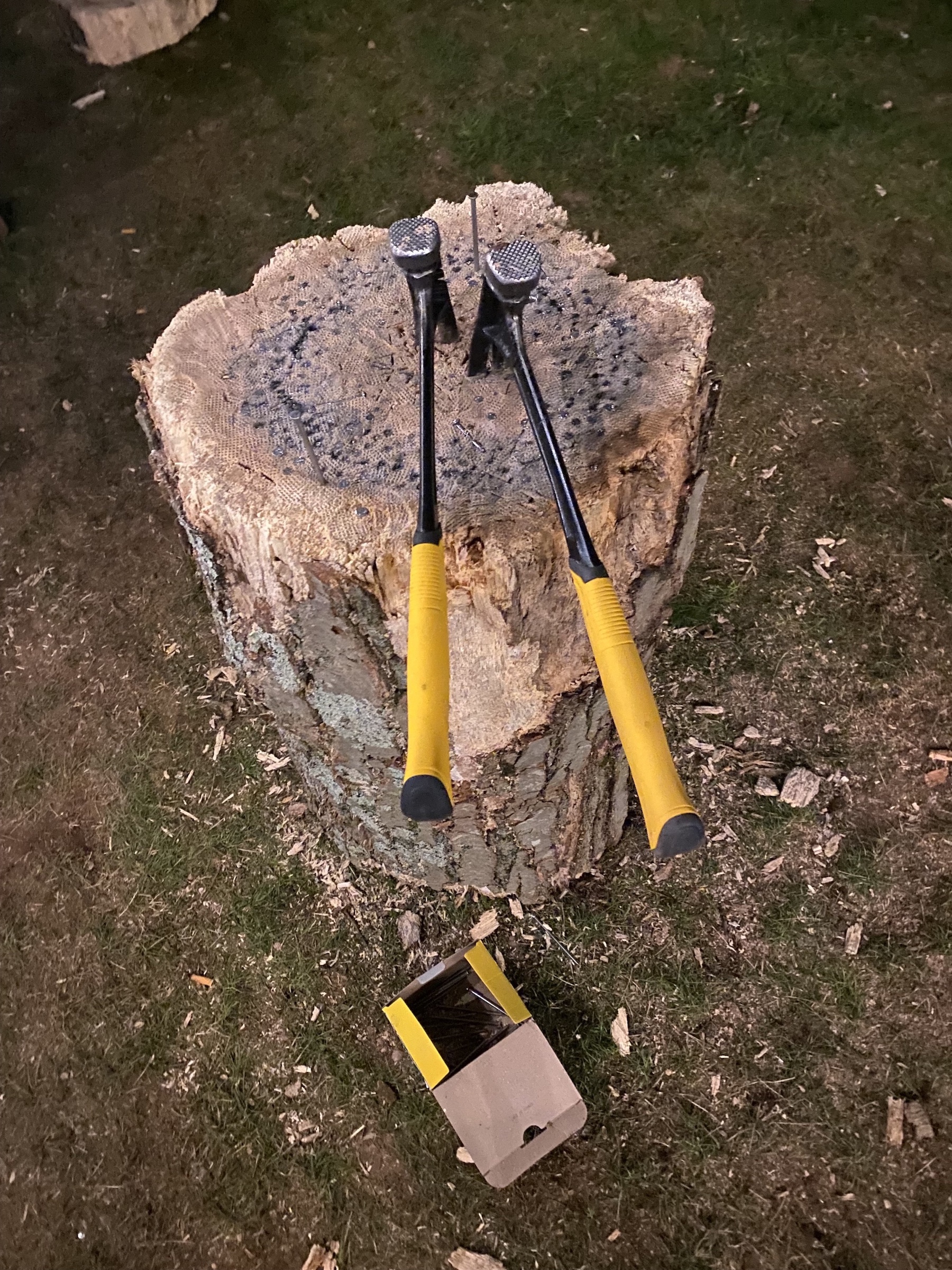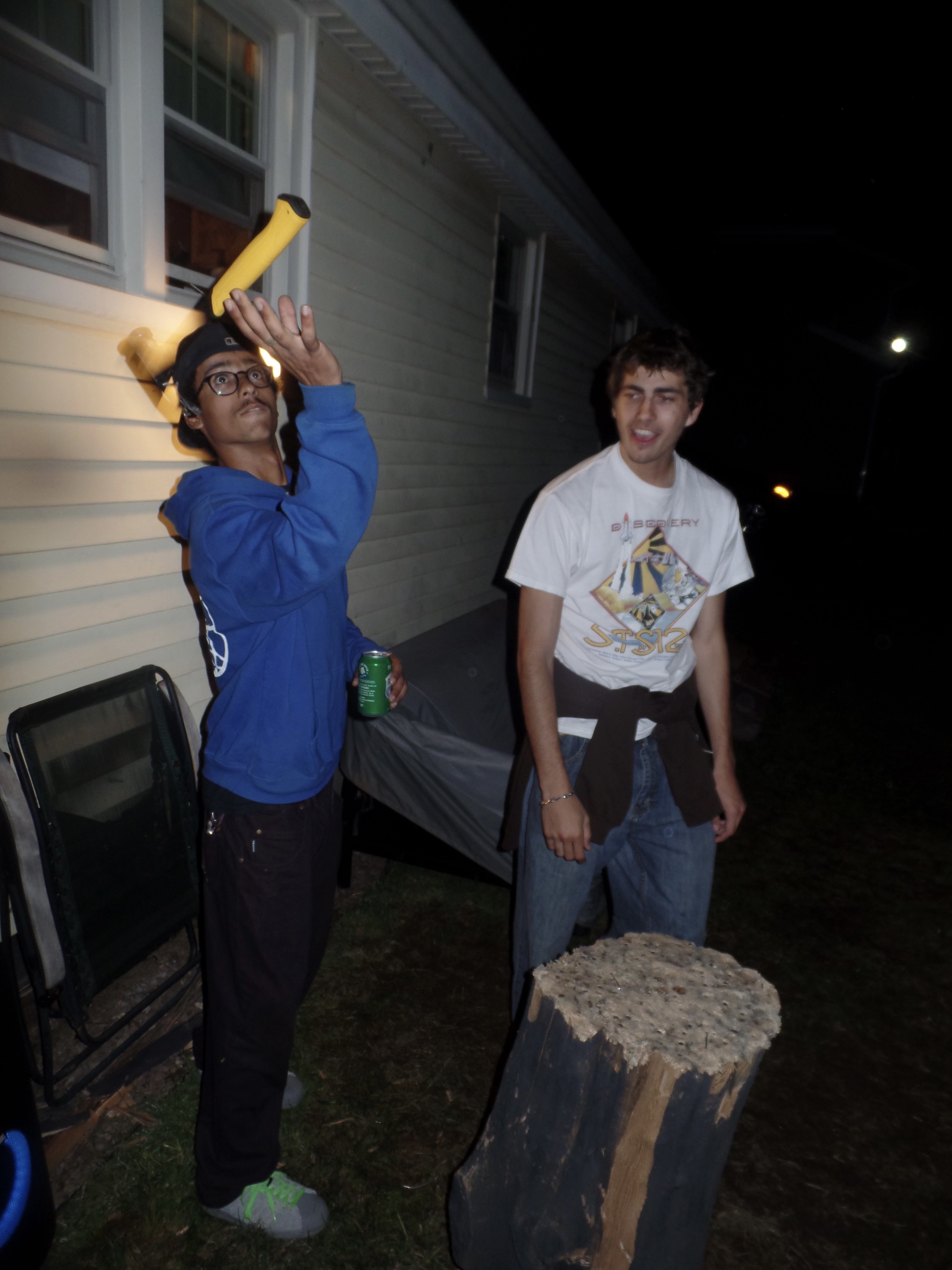
It is 12:37 a.m. on a Friday night. You are wandering down Fountain after some frolicking in the fields by the Freeman Athletic Center. As you approach the end of the street, you hear a jarring and abrupt noise coming from a backyard. Curiosity consumes you, and you cannot help but wander behind one of the houses. As you turn the corner, you see a group of people standing in a circle. They are passing something around, but everyone’s gaze regularly returns to the middle. You edge in towards the crowd, and you finally see past the shoulders of a tall, blond, probably Italian man. At that moment, your glimpse catches the mysterious culprit at the center of the circle: a piece of wood…wait, no…a stump.
Colloquially, stump is a noun that describes the lower part of a chopped tree. At the University, stump is a game. Some might say that stump perpetrates societally unproductive behavior, but to most, it’s a ritual that brings people together. The Argus spoke to those who frequently venture into the world of stump as well as those who are new to the game.
Sam Boston ’25, junior captain of the ski and snowboarding team, gave a summary of the rules for those who are unfamiliar with the game.
“There’s a hammer that is passed around,” Boston said. “It is passed left—left is law. Each individual flips the hammer in a fluid motion then tries to hit someone else’s nail. The goal is to be the last nail standing. If your nail is entirely sunken into the wood, to the point where you cannot fit a fingernail beneath the head of the nail, you must drink your beer. It is a drinking game, but friends who are sober or under 21 also play—it’s inclusive, you don’t have to drink.”
But it’s not that simple. Boston further expanded on the unique quirks of the game.
“If somebody chips the wood [of the stump] with a hammer, everyone yells ‘Chippa,’” Boston said. “And everyone takes a little drink.”
The Argus spoke to Sadie Cook ’24, another junior captain of the ski and snowboarding team, about her experience with stump.
“I worked at a company where all of the employees were backpacking leaders [for] hiking trips over a summer,” Cook said. “They all had been playing this game for years and years. During a leader hangout, people recommended we play stump. [At the University], somebody on the ski team had just known about this game, and I think it might have been someone else that maybe found out about it from an outdoorsy group.”
Boston further expanded on the arrival of stump to the University.
“From my understanding, having been playing since last winter, stump has existed at Wesleyan in the past,” Boston said. “However, this current lineage of stump [began] in February of 2023, in upstate New York, on a ski team race weekend. It came to us on this ski weekend through divine intervention. From there, that stump was brought back to Wesleyan.”

Students also make sure to sustainably harvest the wood and other necessary materials.
“I am totally against cutting down a living tree to source the needed materials,” Boston said. “We only use a tree that has already fallen.”
While the greater origin of Stump remains a mystery, some are familiar with alternative forms of this game.
“My boyfriend has lived in Wyoming, and in Wyoming, they play stump with a little more danger involved, where you have to actually put your hand on the stump when you flip the hammer,” Mira Begg ’24 said.
Even on campus, the different stump locations have varying rules.
“I know of two prime stump locations at the moment on campus,” Boston said. “The two owners of the stumps have moderately different rules, which is always kind of fun.”
Owning a stump comes with more responsibility than only dictating its rules. In uncovering the dynamics of stump, a widespread question has emerged regarding who exactly stump is for. Students agreed that Stump is currently dominated by a certain demographic but are hopeful that it becomes a more widespread and inclusive game.
“I largely associate it with a more outdoorsy crew, which is funny in comparison to how it’s sort of morphed into representing something different at Wesleyan,” Cook said. “But now it’s just become so immersed in this identity of specifically men at Wesleyan. Specifically non-athlete men, but men who are still very interested in playing a game with risk.”
Drinking games often have been popular in spaces instilled with more “bro-y” and masculine connotations, and with stump’s rise, this concern has become relevant.
“I think because of the connotation of hammer and nails, and [hammering them into a piece of wood], there is definitely this masculine thing that’s kind of associated with it, which I don’t particularly like,” Boston said. “In my eyes, stump is or should be an inclusive thing. The main barrier to entry is [when] you approach the thing [and] you’re like, ‘What the fuck? It’s kind of scary.’ So every time there’s someone new playing, no matter who they are, [we let them] get the hammer, flip a few times, get a feel for it. It’s not like, you gotta adhere to all the rules right away, and do everything perfectly.”
Many new players agree that a sense of fear consumes them when they first encounter the game, discouraging them from trying it out.
“I was honestly really scared and, I feel like that’s what’s held me back from playing because I don’t typically throw hammers around,” Begg said.
However, most agree that, while intimidating, stump ultimately seeks to bring people together. With its growing presence, many students are hopeful that it is becoming more and more inclusive.
“I think it attracts a very macho vibe and community, but I want to play and I’m always down to play because we need representation in stump,” Nika Marohnic ’24 said. “I love bringing more people in, and I love showing people who don’t know how to play how to play.”
With the discussion of non-male representation surrounding stump’s emergence, some have already taken active steps to change its presence on campus. Aoife Reynolds ’24 has become the first non-male identifying owner of a stump in the current stump lineage.
“Stump is one of my favorite activities that I learned at Wesleyan,” Reynolds said. “We recently got a stump that we want to spice up and paint pink.”
With stumps multiplying across campus, be prepared to find yourself flipping a hammer in no time. Or get your chainsaw, head into Wadsworth, and harvest (sustainably) your very own stump.
Eugenia Shakhnovskaya can be reached at eshakhnovska@wesleyan.edu.
Mikail Haroon can be reached at mharoon@wesleyan.edu.


Leave a Reply